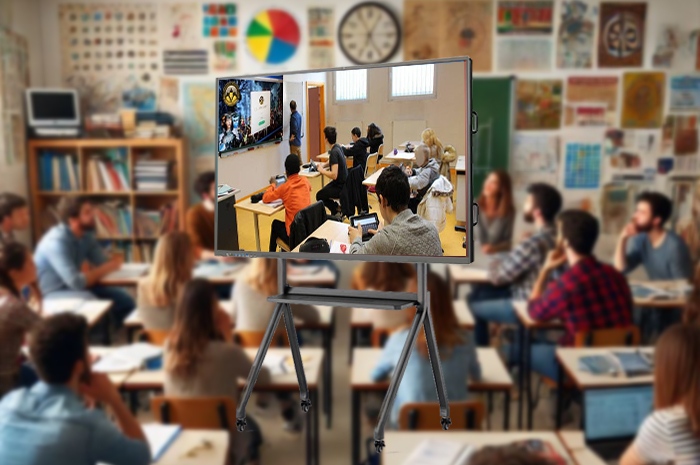
With the rapid development of science and technology, traditional classrooms are undergoing unprecedented changes. The integration of artificial intelligence (AI)
technology, adaptive learning systems and IFPD are jointly shaping the new look of the "future classroom". This educational innovation not only improves teaching
efficiency, but also more accurately meets the personalized learning needs of each student.
1. AI teaching assistants: the intelligent left and right arms of teachers
AI teaching assistants are becoming an indispensable "super assistant" for teachers. It can:
Automatically correct homework, saving teachers a lot of repetitive work time;
Real-time voice recognition and translation, helping bilingual and international teaching;
Intelligent Q&A, providing personalized tutoring for students around the clock;
Learning behavior analysis, helping teachers understand the learning habits and weaknesses of each student.
AI is not only a tool, but also the "second brain" of educators, assisting teachers in making accurate decisions and teaching students in accordance with their aptitude.
2. Adaptive learning: creating a personalized path for teaching students in accordance with their aptitude
The core of the future classroom is to allow every child to grow at his or her own pace. The adaptive learning system is the key to realizing this concept:
The system will dynamically adjust the learning path according to the students' answering performance, learning speed and interests;
Use big data and AI algorithms to push teaching content that is tailored to each student;
Students' learning data is visualized, and parents and teachers can grasp their growth trajectory in real time.
Through adaptive learning, students are no longer bound by the "one-size-fits-all" progress, but instead stimulate deeper learning motivation through active
participation.
3. Qtenboard IFPD: Building an immersive teaching environment
IFPD is the "interface center" of the future classroom, connecting teachers, students and technology:
Support multi-touch and multi-person interaction to stimulate student participation;
Access to Internet resources, and delivery of images, animations, videos, and AR content at any time;
Seamlessly integrated with AI and teaching systems to push learning tasks and evaluation feedback simultaneously;
Adapt to offline and online teaching to improve the fluency and immersion of hybrid learning.
It is not only an upgrade of the traditional blackboard, but also a bridge for communication, collaboration and innovation between teachers and students.
4. Integration of the three: Reconstructing the teaching ecology
The integration of AI teaching assistants, adaptive learning systems and Qtenboard IFPD is not a simple superposition of functions, but a reconstruction of the
education ecology:
Teachers become "guides + designers" and spend more time on inspiration and guidance;
Students become "active learners" and build their own knowledge system with technical support;
Teaching shifts from "teaching-centered" to "learning-centered", which is more efficient and flexible;
Classrooms change from "fixed places" to "smart spaces", realizing cross-regional, cross-time and space learning connections.
Conclusion: The future of education has quietly arrived
The future classroom is no longer just a scene in science fiction movies, but is gradually landing in campuses around the world. Through the deep integration
of AI teaching assistants, adaptive learning and Qtenboard IFPD, we are entering a new era of education that is smarter, fairer and more efficient. For
teachers, this is a leap in education methods; for students, this is a broadening of the growth path; for the education industry, this is a brand new start.
